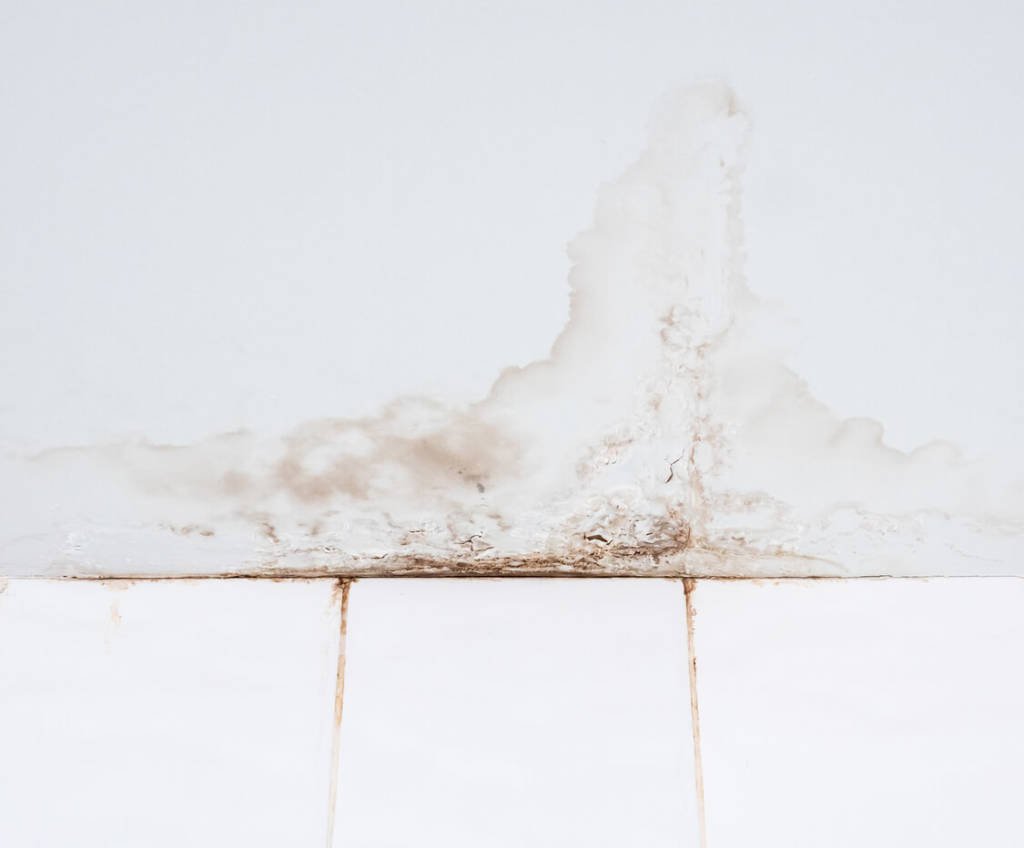10 Things You Need to Know About White Mold

Did you know that mold can be a variety of colors, including white? White mold is one of a few common types found in New England. If you’re curious what causes white mold in homes, if it can affect your health, and how to get rid of it, keep reading. Here are 10 things to know about white mold.
10 Things to Know About White Mold
1. What is White Mold?
White mold is a type of fungus that encompasses a range of mold species that are white in color. White mold can appear as a light powdery texture or a fuzzy texture.
There are two types you can commonly find in New England, which can be white, but may also be green or gray:
- Aspergillus/Penicillium: Commonly referred to as ASP/PEN on a mold inspection report, this is the most common mold species to appear in indoor air samples. ASP/PEN spores are typically allergenic and not toxic but people with weakened immune systems may suffer from exposure. Specifically, those with Lyme disease and asthma.
- Cladosporium: This type of mold is often found within the home, and in high concentrations can be harmful. This is the most common form found in attic mold situations.
2. What Does White Mold Look Like?
White mold can appear as a light powdery texture or a fuzzy texture. It can be hard to spot on white walls or ceilings.
3. What Causes White Mold in Homes?
White mold grows when excess moisture is present in homes. Moisture buildup is often caused by rain or snow, overflow from a plumbing leak, or a basement flood. It’s also often caused by lack of dehumidification.
4. Where is White Mold Commonly Found?
White mold is commonly found in basements, attics, bathrooms, air ducts, and other places that are exposed to moisture. If white mold is in a room, it can also be on things in the room, like a cardboard box sitting on a wet basement floor.
5. White Mold vs. Mildew and Efflorescence
White mold, mildew, and efflorescence can be mistaken for each other, but they each have unique features. Oftentimes, mildew and efflorescence can grow into mold if not properly mitigated. Here’s a helpful chart that outlines the similarities and differences between the three. The information in this chart was compiled from The Spruce, AER Industries, and International Association of Certified Home Inspectors.
| White Mold | Mildew | Efflorescence | |
| Color | White | White or gray | White, yellow, or brown |
| Smell | Strong musty odor | Light musty odor | No smell |
| Texture | Fuzzy or slimy | Flat, fuzzy, or powdery | Chalky powder |
| Locations Frequently Found | Interior or exterior surfaces where excess moisture is present | Indoors where excess moisture is present, outdoors on plants and crops | In water or places with excess moisture or porous building materials like wood, brick, and concrete |
| Common Exposure Symptoms | Allergy-like symptoms | Allergy-like symptoms | None |
| Unique Features | Can grow under surfaces | Common plant disease | Turns into powder when pinched in fingers, dissolves in water |
6. White vs. Black Mold
White mold can be hard to spot because it can blend in with its surrounding, like on a white wall. White mold is non-toxic but can cause allergy-like symptoms.
Black mold, also known as Stachybotrys Chartarum, is toxic. It typically results from a continuous water leak over an extended period. This type of fungus requires 100% water saturation and constant moisture to thrive — as opposed to other forms of mold that only require high levels of relative humidity. Because of its toxicity, black mold is generally more dangerous than white mold.
7. Symptoms of White Mold Exposure
Mold can cause allergy-like symptoms like itchy, red eyes; a sore throat; and a dry cough. It can also cause respiratory issues and itchiness in dogs and cats. Other common side effects include:
- Asthma
- Watery eyes
- Skin rashes
- Sinusitis
- Wheezing
- Pneumonia
8. White Mold Health Risks
In addition to the previously mentioned symptoms, white mold can also cause long-term adverse health effects. These long-term adverse health effects include reoccurring asthma, memory loss, respiratory complications, and depression or anxiety.
9. How to Get Rid of White Mold
If you see white mold or suspect that you have it in your house, contact a mold remediation company. Your first step is to identify where the mold came from and correct the issue. If you suspect mold but can’t identify it, you may also need a professional mold inspection, which is when a certified mold inspector will conduct a visual analysis and may collect samples that will be analyzed in a lab.
After identifying the mold and its source, we recommend that you work with a remediation firm to safely remove the mold. If you choose to remove it yourself, you should wear Personal Protective Equipment (PPE) and following the IICRC S520 guidelines.
10. How to Prevent White Mold
To keep mold out of a house, you need to eliminate the moisture source. Make sure to routinely check and fix any leaks, clean up excessive moisture, and keep all areas dry.
Think You Have White Mold in Your Home?
It’s important to find a reputable mold remediation company to remove the mold and its moisture source. If the source isn’t removed, the mold can grow back.
You want to hire a mold remediation company that will:
- Locate the source that allowed the mold growth in the first place.
- Correct the source of the problem which creates a comprehensive protocol to ensure that the source of the mold will not return.
- Determine the best method to decontaminate the entire area and follow the prescribed procedures.
- Document and construct a report of their finding.
Keep Your Home Safe with EnviroVantage
EnviroVantage is a highly trusted national and regional contractor with offices throughout New England and the Mid-Atlantic. As an industry leader with more than 35 years of award-winning experience, we handle asbestos abatement for both residential and commercial projects and can take on any project, no matter the size.
If you have questions about asbestos removal or would like to speak with one of our specialists, please contact us today.

Are you ready to buy or sell your home?
Whether your offer has just been received or you’re thinking about putting your house up for sale, consider these 15 important questions to ask your home inspector.

Questions?
We’d be happy to answer them — and talk about how EnviroVantage can support your next abatement, demolition, or remediation project.